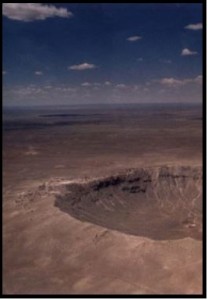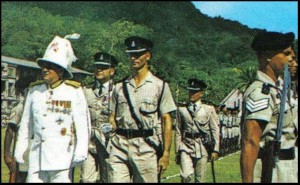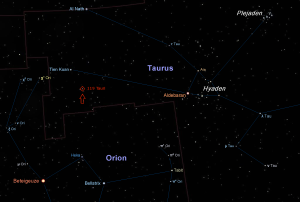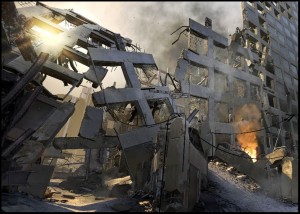Much of Superintendent’s larger universe is only hinted at, where it directly affects the story. For those who desire answers about this wider universe and a handy reference to the work, the following materials have been assembled.
Cast of Characters
- Brad Guthrie – Longtime investigator, new Superintendent of Septura District, Trelawni.
- James Thorpe – Warden of Septura District, child of a wealthy family.
- Diana Black – Anthropologist and powerful activist, leading authority on the Blikt.
- Silv Dulyssis – Investigator on Treflagen, Brad Guthrie’s girlfriend.
- Corporal Challuco – Translator stationed at Colonial Police post, Septura District.
- Dr. Stowe – Village doctor, recently arrived from ten years on a mining asteroid.
- Father Thurston – Village priest, at the latest of many missionary postings.
- Superintendent Freeds – District Superintendent north of Septura, influential among field officers.
- Lem Bryant – Police Commander of Trelawni’s Fourth Region.
- Thom Opelli – Junior Officer of the Colonial Police, long-time acquaintance of Commander Bryant.
- Rhiam Clutchak – Warrant Chief of the Mwklani Blikt Tribe, north of Septura village.
- Phineas Thompson – Governor of Trelawni.
- Stephen Sheaffer – Influential estate owner, Septura District.
- Breanna Carrigan – Estate owner, Septura District. Sister of a murdered man.
- Karl Wilkins – Former Superintendent of Septura District, discharged under bad circumstances.
For an Overview of the planet Trelawni, click Here.
Expanded History
The Terminal Wars and Dark Age
The old empires were vast and bountiful. Their arc of civilization is still characterized as the golden age of the classical period. The causes of the Terminal Wars were many, and have been scrutinized endlessly. Some place the fault with internal political divisions which weakened the old empires, some blame the dozens of tiny usurpers who consumed those fractured leviathans. Whatever the cause, humanity fell from the skies. The outer worlds dropped out of contact, and civilization shrank to merely the closest of the core worlds.
Those beyond were cut off, if they survived. Too many times, conflicts were ended when the losing faction chose to burn out a planet in nuclear fire rather than lose it to the enemy. Little is left of these worlds, and more than a thousand years later many are still uninhabitable.
 Not all worlds winked out in a flash. Some were left to slowly smother after being cut neatly out of the imperial web. This was accomplished by severing the cable of a planet’s space elevator near the surface. The counterweight asteroid to which the far end was tethered would pull away, flung outward by centrifugal force, pulling the cable with it. Lacking any means to move people or cargo easily into orbit, and not finding any interstellar transport once they got there, these worlds were instantly isolated. Heavily dependent upon the core worlds to complete their economy, technology slid and society backpedaled. Lucky worlds managed to find a foothold near the industrial revolution; those lacking resources or large populations regressed to the bronze age. While some short-term isolation was expected, it was unforeseen that the core worlds would take over a millennium to climb beyond their humble resting place and reestablish contact with the rest of their former dominions.
Not all worlds winked out in a flash. Some were left to slowly smother after being cut neatly out of the imperial web. This was accomplished by severing the cable of a planet’s space elevator near the surface. The counterweight asteroid to which the far end was tethered would pull away, flung outward by centrifugal force, pulling the cable with it. Lacking any means to move people or cargo easily into orbit, and not finding any interstellar transport once they got there, these worlds were instantly isolated. Heavily dependent upon the core worlds to complete their economy, technology slid and society backpedaled. Lucky worlds managed to find a foothold near the industrial revolution; those lacking resources or large populations regressed to the bronze age. While some short-term isolation was expected, it was unforeseen that the core worlds would take over a millennium to climb beyond their humble resting place and reestablish contact with the rest of their former dominions.
Modern governments began to grow beyond the core worlds three centuries ago. Hesitant steps at first, reclaiming lost worlds near their doorstep. With time, the new expansionary powers were able to grow upon their new, larger economies and continue the push to reclaim what had belonged to humanity so long ago. Ancient map lines were no longer relevant, and the new nations shaped themselves by need and convenience as they spread and raced around each others’ growing borders.
Many worlds had no immediate use for governments spread too thin to develop them right away; rather, raising the flag merely kept a competing nation from doing so. Coordinated plans for development were only for those planets with much to offer: mineral wealth, large pools of labor, or strategic position. The rest became the thinly regulated domain of private landowners, small commercial concerns, and of course, the natives. Left behind so long ago, these other children of the ancient empires were now totally alien to those who ventured forth in the name of the modern nations. Alien, and quite often inconvenient.
 Means of regulating the vast stretches of colonial real estate, which now outweighed the homeworlds by a factor of forty to one, became increasingly necessary. The Commonwealth’s system was typical: under that nation’s Colonial Police, the native populations of each world were classified by their own internal allegiances. The CP then took it upon themselves to appoint leaders of these groups, removing this power from the groups themselves. With local rulers now totally dependent upon the CP for power, and not upon their own people, the native leadership could be relied upon to keep their own groups in line. The CP could then focus on staffing only the upper levels of government, making do with a skeleton staff to manage millions of natives. The system of “indirect rule,” an ancient concept in the management of occupied territories, thus continued its role in the affairs of empires, a role repeated ceaselessly since its invention 5,000 years before humanity first climbed off the surface of old Earth.
Means of regulating the vast stretches of colonial real estate, which now outweighed the homeworlds by a factor of forty to one, became increasingly necessary. The Commonwealth’s system was typical: under that nation’s Colonial Police, the native populations of each world were classified by their own internal allegiances. The CP then took it upon themselves to appoint leaders of these groups, removing this power from the groups themselves. With local rulers now totally dependent upon the CP for power, and not upon their own people, the native leadership could be relied upon to keep their own groups in line. The CP could then focus on staffing only the upper levels of government, making do with a skeleton staff to manage millions of natives. The system of “indirect rule,” an ancient concept in the management of occupied territories, thus continued its role in the affairs of empires, a role repeated ceaselessly since its invention 5,000 years before humanity first climbed off the surface of old Earth.
While effective in the short term, this system has generated dissatisfaction among the native populations in the long term. Problems of too much territory sharing too few resources continue to pull the fabric of administration thinner and thinner. And yet, none of the involved nations can slow their rate of expansion without being walled in as other nations expand around them. This haphazard means of expansion by force-feeding territory to bloated new nations raised the obvious specter of conflict for nations still living in the long shadow of the Terminal Wars. Treaties and alliances were signed amid broad public support, a popular attempt to keep the repetition of history at bay; but when the New War came, these treaties only obliged more and more nations to rush into what started out as a rather small regional conflict.
Still less than twenty years in the past, the New War is remembered by most as a conflict of the core worlds. Isolated actions did occur in the colony rings, but thin staffing and lack of materiel limited the scale of these engagements. No such limits existed in the core worlds and, though it had been thought an impossibility, ware raged through humanity’s capitals with untempered fury. Fear of a new Terminal War kept nuclear and other mass destruction weapons out of use, but this only doomed the combatants to long battles of attrition, with large numbers of troops fed into the meat grinder of conventional warfare. The human race which emerged was impoverished, deeply ashamed, and more fearful than ever of repeating ancient mistakes.
The Treaty of Halleberg removed the Republic of Tigra, widely blamed as the war’s instigator, from the colonial game. Forbidden to hold colonies or maintain more that a skeletal peacekeeping military, that tight, orderly assembly of worlds has refocused on rebuilding infrastructure and manufacturing. A rising industrial powerhouse, Tigra has begun to turn an impatient eye from commerce to the dreams of empire which she alone has been specifically denied. The other powers, weakened by the war and still laboring under the expenses of far-flung colonies, have all but stopped expansion as they neared the outer boundaries of the ancient empires. With no funding for new infrastructure, they must nonetheless squeeze their colonies for money to continue the day-to-day support of an empire they are no longer certain they want.
The bills are rising. Tigra is rising. At present, no path is clear.


